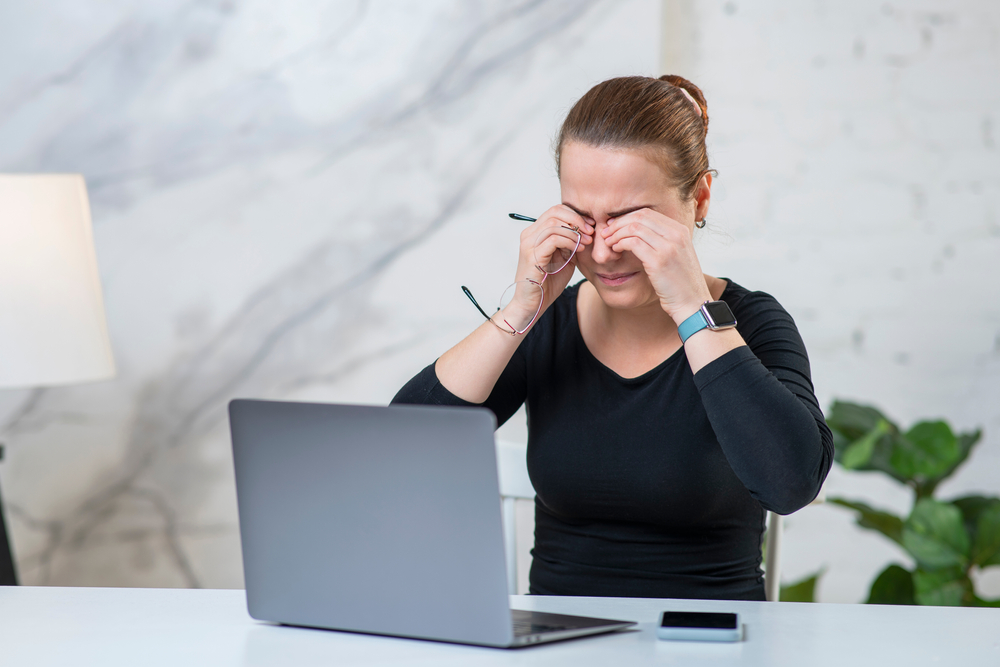
In the digital age, no day is complete without the use of screens. Whether it's for work, education, or entertainment, we spend countless hours staring at digital devices. This constant exposure is often referred to as screen time. Prolonged screen time can have various effects on our health, particularly our eyes. Overuse of screens can lead to digital eye strain, blurred vision, and even permanent damage to our eyesight.
As our reliance on technology grows, so does our time spent in front of screens. It's crucial to understand how screen time can affect our eyes and what we can do to mitigate these effects. One common condition that has been linked to excessive screen time is dry eye.
Understanding the Causes and Symptoms of Dry Eye
Dry eye is a condition where the eyes do not produce enough tears or the tears evaporate too quickly. This results in eyes that are not adequately lubricated, leading to discomfort and vision problems. Symptoms of dry eye can range from subtle to severe and may include a stinging or burning sensation, redness, light sensitivity, difficulty wearing contact lenses, and blurred vision.
There are several causes of dry eye. Age is a significant factor; as we get older, our eyes naturally produce fewer tears. Certain medical conditions and medications can also cause dry eye. However, lifestyle factors are increasingly recognized as contributing to dry eye, with prolonged screen time being one of the main culprits.
The Link Between Screen Time and Dry Eye
The connection between screen time and dry eye is not coincidental. When we look at screens, our blink rate decreases significantly. Blinking is critical for eye health as it spreads tears across the surface of the eyes, keeping them moist and removing any dust or debris. With reduced blinking, our eyes are not as well lubricated, leading to dryness and discomfort.
Research has shown a direct correlation between the amount of screen time and the severity of dry eye symptoms. A study published in the Journal of Ophthalmology found that people who spend more than seven hours a day on screens are more than twice as likely to experience dry eye symptoms.
Additionally, the blue light emitted by screens can also contribute to dry eye. This type of light can disrupt our sleep patterns and cause digital eye strain, which can exacerbate dry eye symptoms.
Practical Tips for Reducing Screen Time
Limiting screen time can significantly reduce the risk of developing dry eye and alleviate symptoms in those already suffering from the condition. Here are some practical tips for reducing your screen time:
Set Time Limits: Allocate a specific amount of time for using your devices each day and stick to it. This can help ensure you're not spending excessive amounts of time staring at screens.
Take Regular Breaks: Follow the 20-20-20 rule – every 20 minutes, look at something 20 feet away for 20 seconds. This gives your eyes a chance to rest and refocus.
Opt for Non-Screen Activities: Whenever possible, choose activities that don't involve screens. Read a book, go for a walk, or engage in a hobby that doesn't require screen use.
Adjust Screen Settings: Lower the brightness of your screens and use night mode to reduce the amount of blue light they emit.
Limiting screen time can help protect your eyes and reduce dry eye symptoms. However, it's also essential to seek treatment if you're already experiencing discomfort.
Dry Eye Treatments and Remedies
There are several dry eye treatments available to alleviate symptoms and improve eye health. Over-the-counter eye drops or artificial tears can provide temporary relief. Prescription medications may also be recommended by your doctor to increase tear production or reduce inflammation.
Lifestyle changes can also significantly impact dry eye symptoms. Staying hydrated, increasing your intake of omega-3 fatty acids, and maintaining a clean eye environment can all help manage dry eye.
In some cases, more invasive treatments such as punctal plugs, which block tear ducts to keep the eyes lubricated, or heat treatments to unclog oil glands in the eyelids may be necessary. It's important to discuss your symptoms and treatment options with an eye care professional.
The Role of Regular Eye Exams in Preventing and Managing Dry Eye
Regular eye exams play a crucial role in preventing and managing dry eye. These exams can help detect dry eye in its early stages, allowing for timely treatment and the prevention of further discomfort or damage. During an eye exam, your doctor will evaluate your symptoms, examine your eyes, and perform tests to measure tear production and quality.
Regular eye exams can also help identify other eye conditions that may be causing or contributing to your dry eye symptoms. This is particularly important if you spend significant amounts of time in front of screens, as this can increase your risk of developing other eye conditions.
Balancing Screen Time and Eye Health
While screen time has become an integral part of our lives, it's important to balance it with our eye health. Understanding the link between screen time and dry eye, recognizing the symptoms, and taking steps to limit our exposure to screens can go a long way toward maintaining our visual health. Regular eye exams and appropriate treatments are also critical.
If you're experiencing symptoms of dry eye or have concerns about your screen time, visit Glenpool Eye Care at our office in Glenpool, Oklahoma. Please call (918) 233-8400 to schedule an appointment today.







